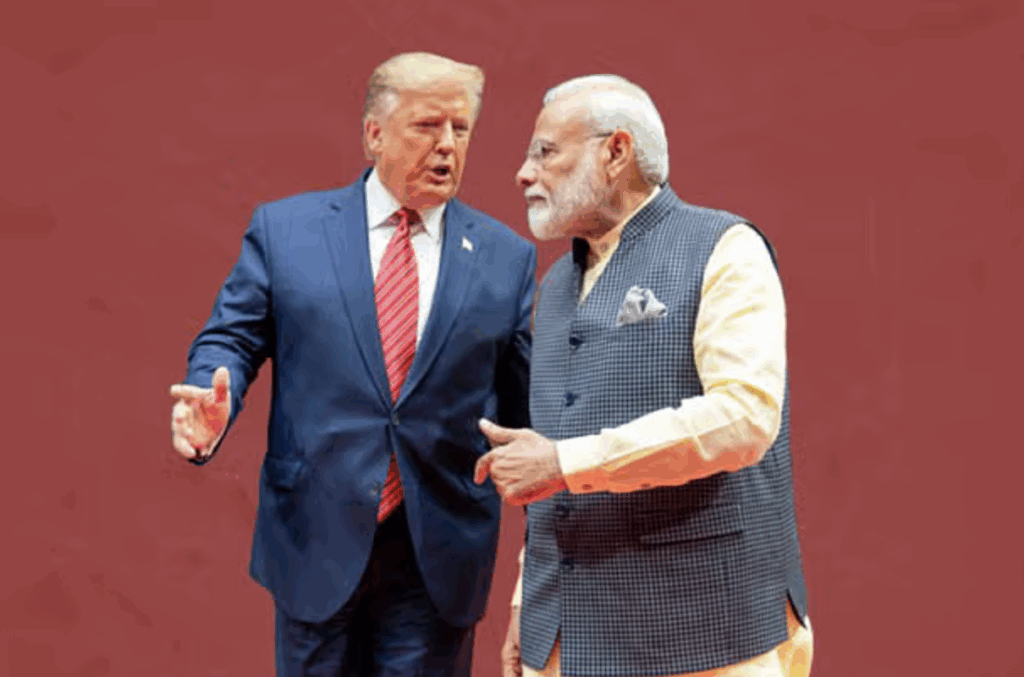
In a surprising geopolitical maneuver, Indian Prime Minister Narendra Modi is set to visit China for the first time in seven years, a move that underscores the escalating tensions between India and the United States. This development follows U.S. President Donald Trump’s imposition of a hefty 50% tariff on Indian goods, a decision that has sent shockwaves through global trade circles.
The tariff, which places India alongside Brazil as the latest BRICS nation to face such a penalty, comes amid Trump’s broader trade offensive. Earlier, Brazil faced similar tariffs ostensibly due to its handling of former President Jair Bolsonaro’s alleged coup attempt. South Africa, another BRICS member, is currently dealing with a 30% tariff, the highest in sub-Saharan Africa, while countries like Nigeria, Ghana, Lesotho, and Zimbabwe face a comparatively lower 15% tariff.
India’s Economic Dilemma
As India grapples with this economic challenge, Modi’s decision to attend the Shanghai Cooperation Organization meeting in Beijing on August 31 is seen as a strategic pivot. Trump’s tariffs are part of his broader dissatisfaction with BRICS nations, particularly their efforts to replace the U.S. dollar as the world’s reserve currency. He accuses the bloc of aligning with “anti-American policies.”
Economists at Nomura Holdings describe the 50% tariff as a “trade embargo” against India, a nation long considered a counterbalance to China’s regional ambitions. This tariff comes at a time when India is heavily reliant on importing cheap, sanctioned Russian oil, with annual purchases estimated at $275 billion.
“If the extra 25% tariff that President Trump has announced on imports from India remains in place, India’s attractiveness as an emerging manufacturing hub will be hugely undermined,” says economist Shilan Shah at Capital Economics.
Impact on Indian Economy
The ramifications of Trump’s tariffs are expected to be widespread across India’s economy. In 2024, India exported $87.4 billion worth of goods to the U.S., making it a significant trading partner. Certain sectors, such as gems and jewelry, apparel, textiles, and chemicals, are particularly vulnerable to the tariffs.
UBS economist Tanvee Gupta Jain notes, “In terms of sectors impacted, we think gems and jewellery, apparel, textiles, and other chemicals are more exposed to the US tariffs and could see some targeted support measures from the government.”
Rajat Agarwal, a strategist at Societe Generale, highlights the financial market implications, stating, “The impact of tariffs for equities has fed through mainly via a weaker Indian rupee and higher currency volatility, which has weighed on foreign flows in the near term.”
Global Trade Dynamics
Trump’s aggressive tariff strategy has also affected other global trade agreements. Recent deals with Japan and the European Union have been fraught with confusion and disputes over tariff rules, particularly concerning automotive imports.
Richard Katz of the Japan Economy Watch newsletter notes, “Ford, General Motors and Stellantis complain that Trump’s agreement with Japan and Europe puts them at a disadvantage.”
Meanwhile, in Europe, officials are managing the fallout from Trump’s demand for the EU to purchase $750 billion of U.S. oil and gas. European Commission President Ursula von der Leyen has made it clear that the EU cannot force private companies to comply with these political demands.
India’s Domestic Response
Back in New Delhi, Modi is working to reassure key domestic constituencies, particularly farmers, that their interests will not be sacrificed. Speaking at an agricultural conference, Modi stated, “I will never compromise on the interests of farmers, livestock owners and fishermen. I know, personally, I’ll have to pay a heavy price — but I am ready for it.”
The Gem and Jewellery Export Promotion Council has expressed deep concern over the tariff escalation, warning of “far-reaching repercussions across India’s economy — disrupting critical supply chains, stalling exports and threatening thousands of livelihoods.”
Billionaire Anand Mahindra, chair of the Mahindra Group, has called for a focus on improving the ease of doing business in India, emphasizing the need for national resilience in the face of global challenges.
Looking Ahead
While some economists, like those at Barclays, suggest that India’s domestic orientation might mitigate the damage, others, such as Morgan Stanley’s Bani Gambhir, anticipate that the Reserve Bank of India may need to step up measures to boost growth, including potential interest rate cuts.
As BRICS nations continue to explore alternatives to the U.S. dollar, Trump’s tariffs may inadvertently strengthen ties between India and China, potentially altering the geopolitical landscape in ways that could surprise Washington.
Follow William Pesek on X at @WilliamPesek






